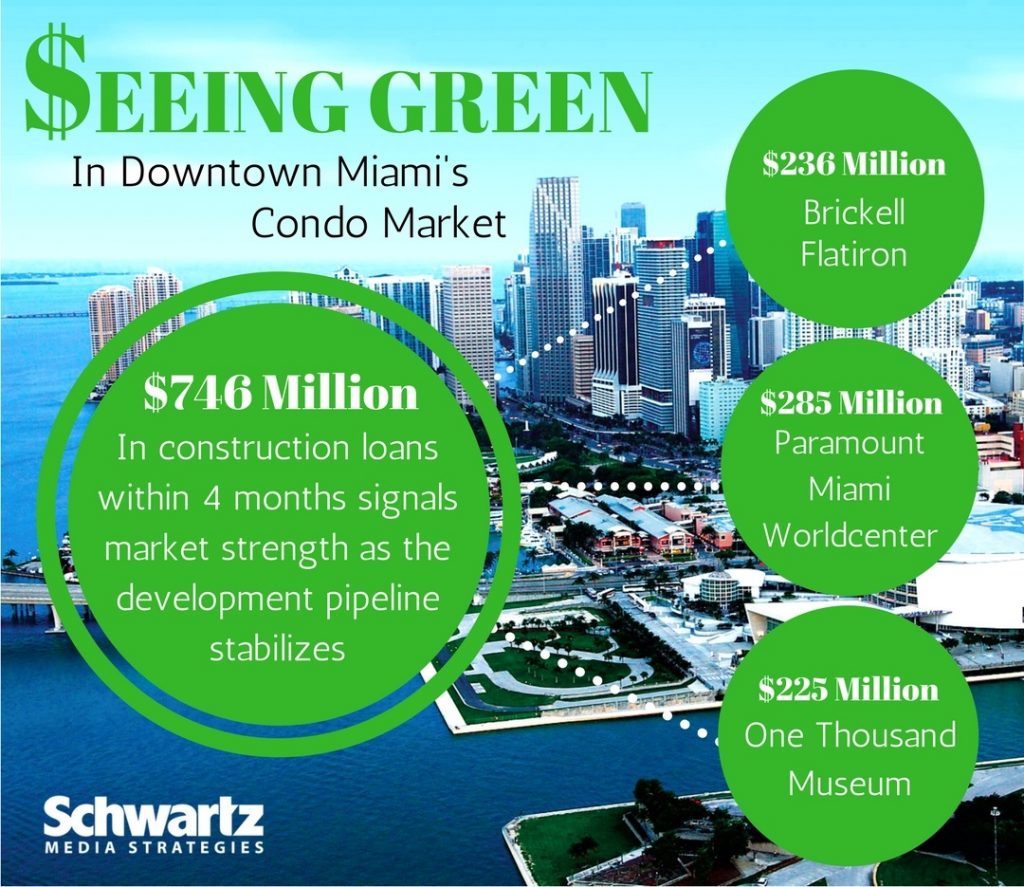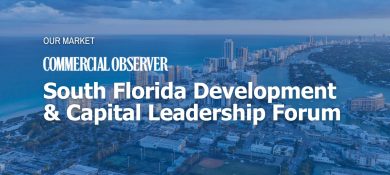It’s no secret that Downtown Miami’s condo market has leveled off over the past year as sales activity slows, but a slowdown should not be confused with a shutdown.
In fact, a string of construction loans totaling close to $750 million in the past four months suggests the market has stabilized, with lenders eager to fund projects in position to thrive based on their location, sales success and the quality of the development team. In other words, banks are still betting on Miami, but they’re putting their money behind the horses with 2:1 odds and bypassing the long-shots.
 In the latest example illustrating how banks are favoring projects that check the proverbial boxes (location, sales, developer credibility), Ugo Colombo’s CMC Group closed this week on a $236 million construction loan for Brickell Flatiron.
In the latest example illustrating how banks are favoring projects that check the proverbial boxes (location, sales, developer credibility), Ugo Colombo’s CMC Group closed this week on a $236 million construction loan for Brickell Flatiron.
READ RELATED: CENTER OF TOURISM GRAVITY SHIFTS TO DOWNTOWN MIAMI
The 549-unit tower is located in the heart of the Brickell Financial District (check), is already under construction and 60 percent pre-sold (check), and benefits from Colombo’s 25 year history building some of Miami’s most valuable condos — from Bristol Tower and Santa Maria, to Grovenor House and EPIC Residences (you get the drift).
Likewise, last December saw the Zaha Hadid-designed One Thousand Museum project score a $225 million loan, and Paramount Miami Worldcenter closed on $285 million in financing just last month. These developments, like Brickell Flatiron, also checked the boxes.
The result of this newfound rigidness among lenders is a condo market that’s approaching ‘normalized’ levels of development and sales. Fewer than 2,000 new condo units will come online in downtown by 2019, which is an optimal level of activity according to the newest Miami DDA market report.
READ RELATED: STATE OF DOWNTOWN MIAMI PROGRESS AND CHALLENGES
This ‘new normal’ in the market represents a stark reversal from the boom and bust tendencies that have historically plagued Miami’s development landscape. To understand the dynamics at play and the extent to which today’s market is vastly different from years past, it’s helpful to take a step back to consider what isn’t happening right now.
Banks are not foreclosing on condo properties en masse. Opportunistic buyers are not swooping in to seize upon distressed deals. Vulture funds are not buying condo units in bulk. Developers are not halting unfinished projects.
Think about that for a second. As recently as 2011, Miami’s condo market was still treading water coming out of the recession. Headlines around the world cast us as a hotbed of speculation and the resulting overdevelopment. Fast-forward to today, and the media is reporting that the Miami real estate community has learned from the mistakes of its past.
What a difference six years makes.







 See More Blogs
See More Blogs
Comments